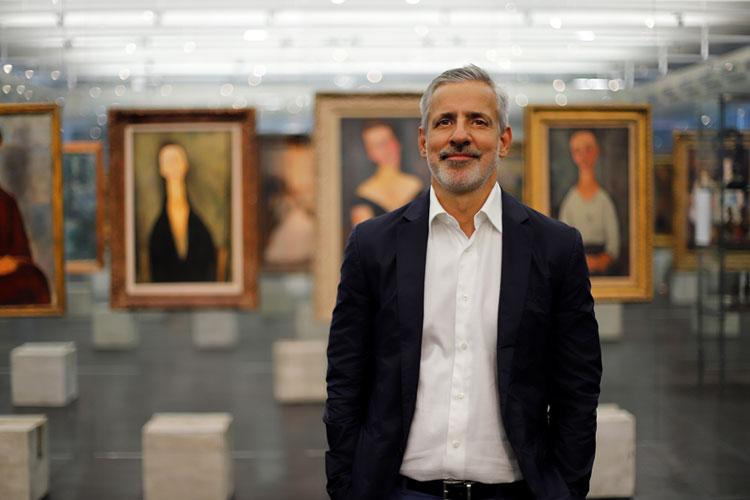Adriano Pedrosa Announces 332 Artists in 60th Venice Biennial


Adriano Pedrosa is the first curator from South America and the first to openly identify as queer to curate the art biennial in Venice, marking its 60th edition, it is high time, on both counts. The architecture biennial in 2023 saw its first female curator from the African diaspora, Lesley Lokko, and since then biennial management (architecture, dance, and art) have strived (and succeded) with carbon net neutrality certification in their central presentation. Environmental, diversity, and inclusion goals: check.
The 332 artists, many marginalized, queer, and never before exhibited at the central exhibtion, are on the list. But, as usual, they range from emerging, mid-career, and established living artists, include Beatriz Cortez, Olga De Amaral, Hito Steyerl (through the Disobedience Archive), Simone Forti, Samia Halaby, Lauren Halsey, Rindon Johsnon, Bouchra Khalili, Teresa Margolles, Ahmed Morsi, Puppies Puppies (Jade Guanaro Kuriki), Zilia Sánchez, Ana Segovia, Yinka Shonibare, Superflex, Salman Toor, Kay WalkingStick, and WangShui. Pedrosa writes in the press release:
The Italian straniero, the Portuguese estrangeiro, the French étranger, and the Spanish extranjero, are all etymologically connected to the strano, the estranho, the étrange, the extraño, respectively, which is precisely the stranger. Sigmund Freud’s Das Unheimliche comes to mind—The Uncanny in English, which in Portuguese has indeed been translated as “o estranho”– the strange that is also familiar, within, deep down side. According to the American Heritage and the Oxford Dictionaries, the first meaning of the word “queer” is precisely “strange”, and thus the Exhibition unfolds and focuses on the production of other related subjects: the queer artist, who has moved within different sexualities and genders, often being persecuted or outlawed; the outsider artist, who is located at the margins of the art world, much like the self-taught artist, the folk artist and the artista popular; the indigenous artist, frequently treated as a foreigner in his or her own land. The productions of these four subjects are the interest of this Biennale, constituting the Nucleo Contemporaneo.
Interestingly, Pedrosa seems to veer away from the meaning of the word foreigner as someone in a land they are not from, or someone from somewhere else—wth global ecological crises, inequitable economies, and other reasons that spur mass migration bringing another vantage point to the word may be a breath of fresh air. Rather he will focus on pecularities, strangeness, or being the other. It will be interesting to see what new understanding of our human condition may come from merging these others: queer, outsider, folk, and indigenous artists.
In addition to the contemporary nucleus, above, the central exhibition will also have a historical nucleus, three rooms featuring close to 200 Latin America, Africa, the Middle East and Asia from the 20th century focusing on modernism, and modernism in the Global South and European artists from the same period who worked with modernism beyond Europe.
Having worked with The Immigrant Artist Biennial, I am eager to see the section which, according to the press release is “dedicated to the worldwide Italian artistic diaspora in the 20th century: Italian artists who travelled and moved abroad developing their careers in Africa, Asia, Latin America, as well as in the rest of Europe and the United States, becoming embedded in local cultures—and who often played significant roles in the development of the narratives of modernism beyond Italy.” This room will feature works by 40 artists who are first or second generations Italians, exhibited in Lina Bo Bardi’s glass easel display system (Bo Bardi herself an Italian who moved to Brazil, and who won the 2021 Biennale Architettura’s Special Golden Lion for Lifetime Achievement in Memoriam). TIAB’s first edition showcased artists born outside of the United States and working in the U.S, while its second edition broadened its understanding of ‘immigrant’ to include second-generation immigrants and immigrants to other countries. It will be interesting to look at immigrants through the lens of one artistic movement during a set period of time across geographic borders.
However, as Pedrosa explains, everyone is a foreigner in the end, with the expression Stranieri Ovunque “wherever you go and wherever you are you will always encounter foreigners— they/we are everywhere. Secondly, that no matter where you find yourself, you are always truly, and deep down inside, a foreigner.” If he speaks for all, of himself and the groups he identifies with remains to be seen at the 2024 Venice Art Biennial.
The biennial opens to the public on April 20, 2024.
You Might Also Like
An Intimate Sense of Dislocation: Warsza’s Roma Pavilion in Venice and an Itinerant Friend
Delfina Foundation to Present Performances at 2019 Venice Biennale
What's Your Reaction?
Carson Woś is a researcher, writer, and arts administrator. Her research interests include fiber art, global feminisms, and architectural sustainability, and she is a contributor to Cultbytes and Artspiel. Currently, the Development Officer for The Immigrant Artist Biennial and Partnerships Director at Seminal. Woś has held previous positions at Artnet, Hampton Court Palace, Metropolitan Museum of Art, MoMA PS1, and Creative Capital. Woś holds an MA in Decorative Arts, Design History, and Material Culture from Bard Graduate Center, and an MA (Hons) in Art History from University of St Andrews in Scotland.

